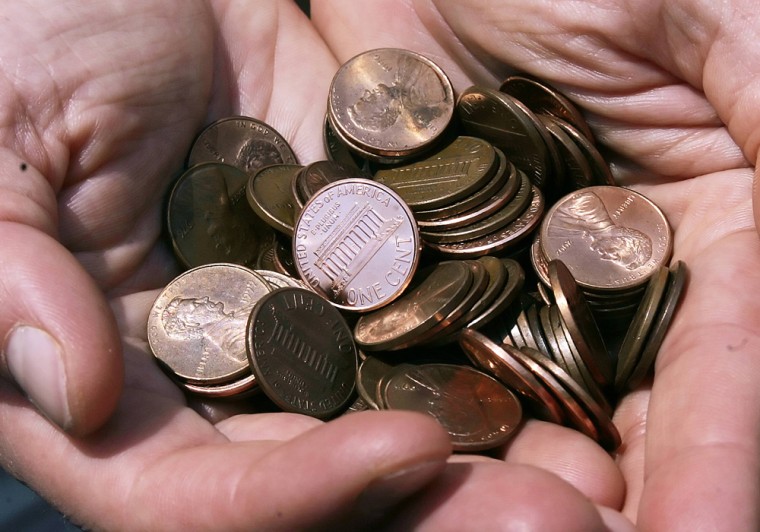The exchange rate for U.S. currency abroad may have dropped to record lows in recent months, but a new study on a metal found in American minted coins suggests they are more valuable than their imprinted amounts.
The study, accepted for publication in Archaeological Science, also found that some pennies are more European than American, since the metal in them came from an English mine.
Despite the sometimes un-American history of U.S. coins, lead researcher Ryan Mathur suggested that a stash of pennies might be worth more than you think.
"At the current price of copper, it would be very profitable to melt pennies and sell the copper," he told Discovery News. "There are relatively simple calculations that demonstrate that."
The same may hold true for nickels, which consist of a copper and nickel alloy.
For the study, Mathur, an associate professor of geology at Juniata College in Pennsylvania, collaborated with a museum director, another geologist, a coin dealer and other experts to analyze U.S. currency coined from 1828 to 1972.
They determined that while copper in U.S. coins does not carry a distinct signature, copper isotopes do vary depending on the temperature at the time of mineralization. This allowed them to trace metal sources back to their original ore deposits. An isotope is one of two or more atoms that have the same atomic number but different mass.
Historical records reveal that from 1800 to 1837, entrepreneur Matthew Robinson Boulton, who was director of the Soho Mint in Cornwall, England, supplied copper for the U.S. Mint. Mathur and his team, however, could see that British copper remained in American cents until 1849, when the supply came from a Michigan mine.
"These Michigan copper deposits fueled our ability to grow as a country," Mathur said. "So much so that in 1865, the director of the mint stated that we should no longer deplete the precious resources in Michigan, and stated we would start buying copper from other locations. I can see this shift in the isotope ratios of the pennies."
Records also indicate silver and gold in other U.S. currency was imported from abroad.
Even after most metals were American mined, Mathur and his team could tell that certain mints chose to obtain their copper from distant states, sometimes even hoarding it when the metal was less expensive, for use in later pennies. This was particularly evident among Philadelphia-minted coins. Isotopes in Denver-minted coins also show that they often contained copper from Butte, Mont.
In terms of copper's value today, Mathur said older pennies are always more valuable. Until around 1850, pennies were three to four times larger than today's pennies and contained 88 percent copper.
"Things changed with regard to the amount of copper in the early 1900s to 95 percent copper and 5 percent nickel," he said, adding that in 1981, "we changed to 5 percent copper and 95 percent zinc."
The exception to the "older is more valuable" rule is the 1942 penny. Due to wartime needs, it was made out of iron and not copper, according to Mathur.
Another odd twist to the value of American currency is that money sometimes costs more to make than it is worth.
In a letter to Congress, the U.S. Mint wrote, "Higher zinc, copper and nickel prices are raising the production costs of the nation's coinage." As a result, beginning two years ago, the cost of manufacturing pennies and nickels actually began to exceed the value of the coins themselves.
A penny may cost 1.23 cents to make, while a nickel can cost 5.73 cents to mint.
Mathur hopes to use his isotope analysis technique to look at other American artifacts made out of copper, such as Native American goods, to see if he and his team can trace trade routes and cultural interactions.
